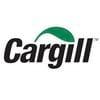Experimental and field evaluation of the performance of two ELISA methods to detect seroconversion against swine erysipelas in pigs
Published: June 11, 2025
Source : A. Sanchez-Matamoros 1, M. Blanch 1, L. Valls 1, A. Camprodon 1,*, J. Maldonado 1 / 1 HIPRA, Amer, Spain.
Summary
Keywords: Diagnostic, Erysipelothrix rhusiopathiae, serology
Introduction:
Swine erysipelas (SE) is one of the diseases of greatest prevalence and economic importance in pork production. A protective role of specific antibodies against Erysipelothrix rhusiopathiae, the causative agent of SE, has long been suggested. Mass vaccination against SE is the most commonly used approach to control SE, which relies heavily on the development of a strong herd immunity. Despite the efficacy of existing vaccines, inadequate vaccination protocols may lead to the emergence of SE outbreaks even in vaccinated herds. Serological monitoring is, therefore, of paramount importance in disease control. The aim of this study was to compare two commercially available ELISA kits regarding their competence to assess immunization of SE vaccinated and naturally infected pigs.
Materials and Methods:
A total of 458 sera of known SE status were tested in duplicate for anti-SE antibodies by the indirect ELISA 1 (Civtest Suis SE/MR, Hipra, Spain) and 2 (Ingezim Mal Rojo 1.1.MR.K1, Ingenasa, Spain), as per manufacturer’s instructions. Samples were divided into three groups: G1 with 111 SE-negative sera (certified in origin), G2 with 122 SE-positive sera after infection (87 coming from vaccination-challenge studies and 35 from natural infection), and G3 with 225 SE-positive sera collected at time intervals after vaccination (5 commercially available SE vaccines) under experimental conditions (not challenged).
The results were assessed for sensitivity (Se), specificity (Sp), agreement and correlation (Rho) among the assays using kappa statistic and Spearman Rank Order Correlation. Statistical analyses were performed using MedCalc and SPSS software.
Results:
The results of G1 and G2 were similar in both ELISAs, which in turn showed high sensitivities and specificities, although the ELISA 1 performed marginally better than ELISA 2 in terms of Se (100% and 97.5%, respectively) and Sp (100% and 98.7%, respectively). In addition, an almost complete agreement (kappa=0.96), and a strong positive correlation (Rho=0.86) were found between the results from both tests using samples in G1 and G2.
Comparison of the results obtained with the two kits using samples in G3, showed a substantial agreement (kappa=0.73) and a strong positive correlation (Rho=0.86).
Conclusion:
These results demonstrate that ELISAs 1 and 2 are suitable for the evaluation of antibody response in SE infected and vaccinated pigs, with good performance characteristics. Also, these kits seem to be useful to assess the immunization of pigs after vaccination with different commercially available vaccines and immune status of pig populations.
Disclosure of Interest: None Declared.
Published in the proceedings of the International Pig Veterinary Society Congress – IPVS2016. For information on the event, past and future editions, check out https://www.theipvs.com/future-congresses/.
Content from the event:
Related topics:
Recommend
Comment
Share

Would you like to discuss another topic? Create a new post to engage with experts in the community.









